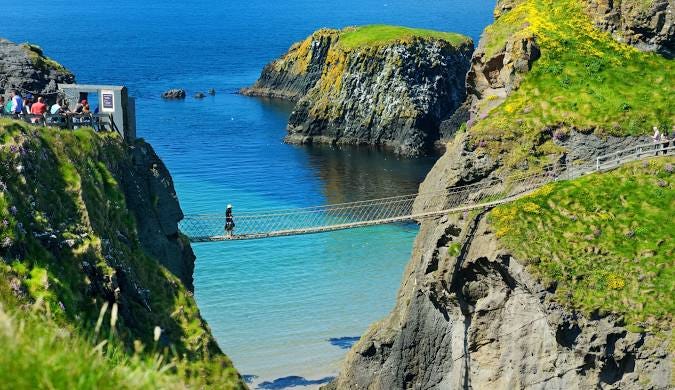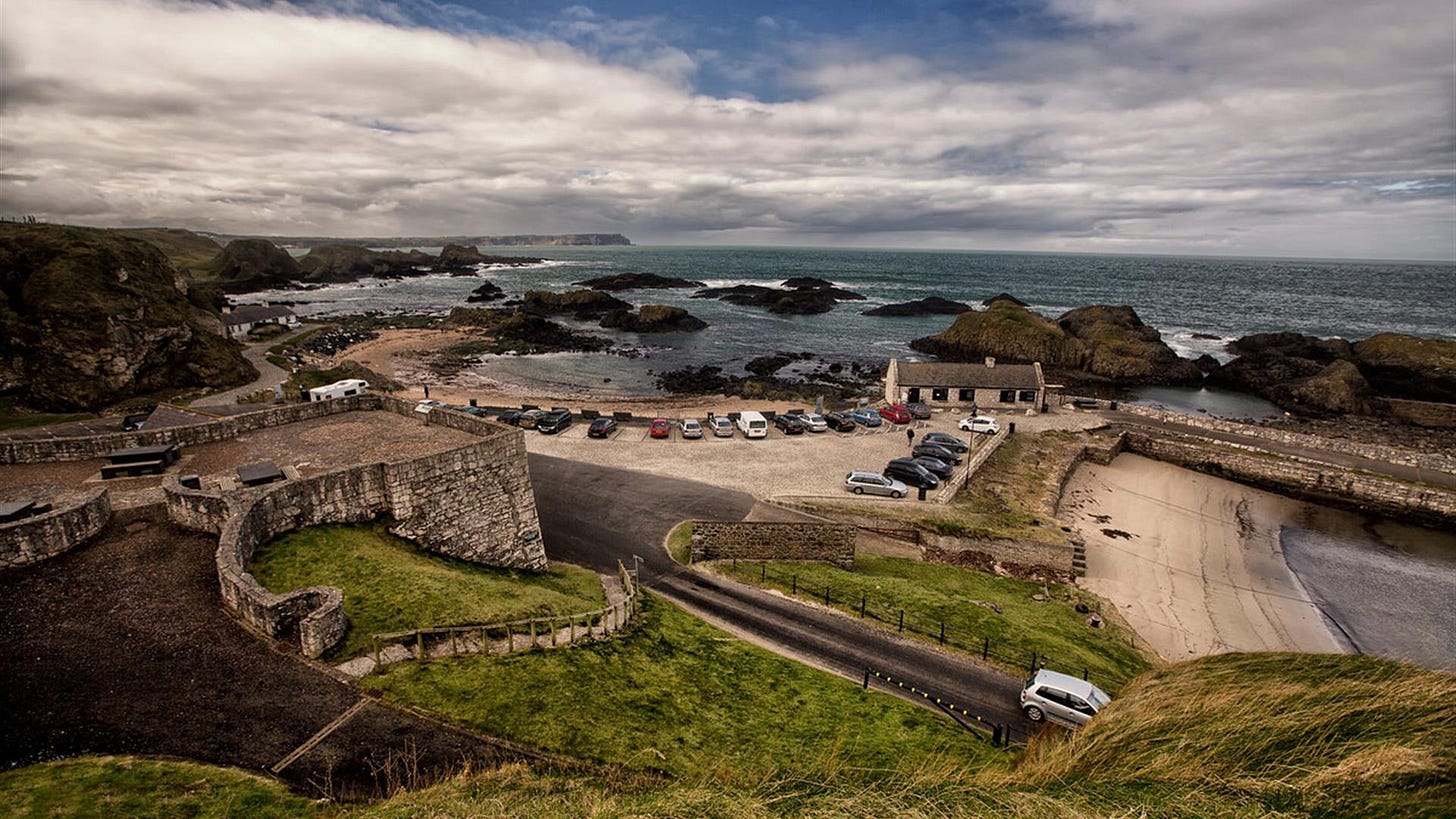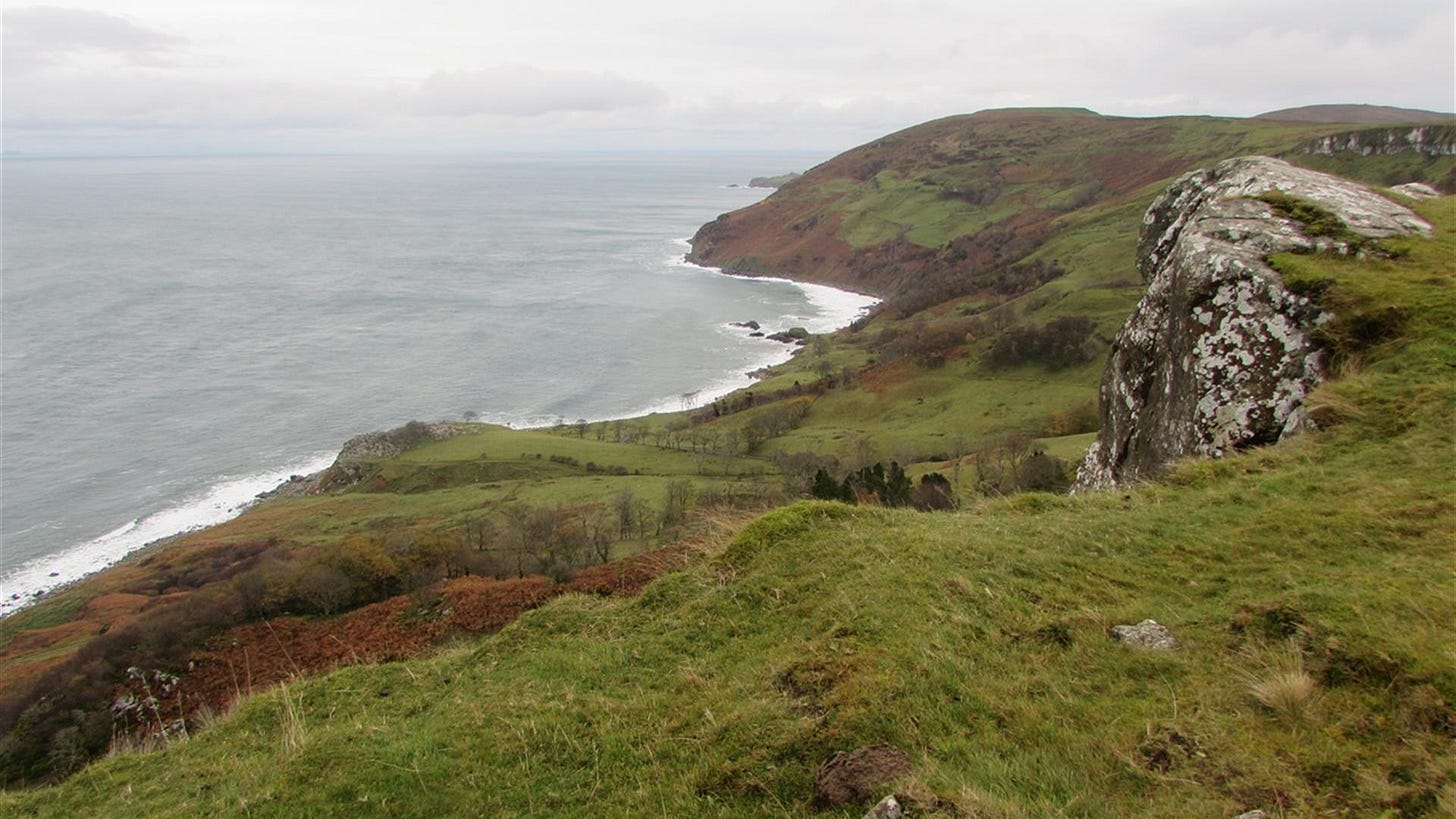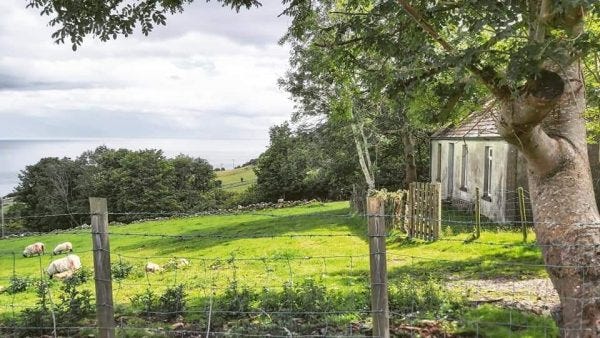Although I have a reputation for being anti-social, I genuinely enjoy having visitors and none more so than my son and his girlfriend who came to see me last weekend for a few days.
The prospect of a visit always motivates me to think of places to go and although my son knows a lot of them by now, there are still a few gaps. His girlfriend, on the other hand, has only been here once before so there’s plenty of scope for surprising her.
This time I decided to surprise both of them by taking them to as many locations as possible that have featured on the Game of Thrones on the north and east coasts of this lovely part of the world.
They’re both big fans and have watched all eight seasons at least twice. I don’t know how they persevered because I’m still slogging my way through it for the first time. I’m already flagging, even though I haven’t yet finished season six. I’m determined, however, to get to the end of it just so that I can boast that I did.
I love all the political intrigue but the extreme violence turns me off, so much so that I spend half my time looking anywhere but at the screen. Last night for instance I watched a battle between the usurpur of a castle called Winterfell and its erstwhile Lord. It was horrendous. If I tell you that the main character rose up out of a pile of bodies at least six feet deep at one point, that will give you an idea of the bloody nature of it.
However, it has done wonders for the tourist trade in Northern Ireland with tour companies now offering day trips to various locations in counties Down and Antrim. My version isn’t quite so comprehensive but then again it doesn’t cost anything.
We started on the Friday afternoon with a visit to the Dark Hedges (see photo below) which is situated just a few miles from me. The reason it’s called the Dark Hedges as opposed to, say, the Avenue of Trees is apparently because the tunnel of trees (which were planted in the 18th century to enhance the driveway up to a private house) blocks the light to such an extent that it looks like a hedge. No, it doesn’t make any sense to me either.
Anyway, I have to admit to being a bit disappointed. Compared to a visit with my son about 18 months previously, there seemed to be far fewer trees. I knew that some of them had had to be culled because of their age, but this time the effect of the recent storm was very apparent. It’s still a pretty amazing sight, however, and my son’s girlfriend was suitably impressed.
On Saturday we moved up to the north coast, starting at Carrick-a-Rede rope bridge. Now owned by the National Trust, the bridge was first erected by salmon fishers (I really don’t like that word but it does allow for the possibility that women can fish) in 1755 in order to connect with the island of Carrick-a-Rede .
The name, which comes from the Gaelic 'Carraig-a-Rade', means ‘The Rock in the Road’, an obstacle for the migrating salmon as they search for the river where they started life. The point of the bridge (which originally only had a rope handle on one side) was so that the fishers (ugh!) didn’t have to rely solely on a boat to get to the island. They then caught the fish in nets which they cast in such a way that the fish swam into them. All very clever.
Next stop was the Larrybane quarry which, as the name might suggest, is not particularly picturesque. In fact, the extensive quarrying for limestone in the 19th century resulted in the loss of most of the headland and an ancient fort which dated back to 800AD. The quarry closed in 1970 and the National Trust took over the area in 1978.
After lunch, we moved onto Ballintoy Harbour which is, unlike Larrybane, extremely picturesque. Built from limestone blocks and surrounded by limestone cliffs, the harbour was once a hub for north coast fishing, boat building and local industries such as limestone extraction which began here at the beginning of 1860. Ballintoy is still a working harbour for local fishers (there’s that word again, sorry). A short walk from the harbour are a number of small caves or perhaps hollows would be more accurate as they’re not very deep. I’m told that the fishers (sorry) use them to store their boats sometimes.
Our final stop that day was the spectacular Dunluce Castle. If you’re interested in history, this place is steeped in it. First built by the MacQuillan family around 1500, the earliest written record of the castle was in 1513. As you can see from the picture below, it’s perched high on sheer basalt cliffs, making it virtually impregnable from the sea. It was seized by the ambitious MacDonnell clan in the 1550s, who set about stamping their mark on the castle under the leadership of the warrior chieftain Sorley Boy MacDonnell. After losing control of the castle in the early 1580s, his troops somehow scaled the cliffs to recapture it.
In the 17th century Dunluce was the seat of the earls of Antrim and saw the establishment of a small town in 1608. The dramatic history of Dunluce is matched by tales of a banshee and (probably a myth) about how the castle kitchens fell into the sea one stormy night in 1639.
Sunday was a day of rest in terms of the Game of Thrones tourist trail. Just to dent my anti-social reputation further, I invited all my nephews and nieces who live locally over to my house for afternoon tea and scones (or wine/beer) with their offspring so that they could catch up with my son and his girlfriend.
Seeing them all together in one place at one time, I was very struck by just how successful they all are. I don’t mean that in terms of their careers (although that’s also true) but rather in terms of their relationships. They seem very settled and, most importantly, happily committed in their various partnerships. I know I’ve said this before but I am in awe of people who manage to stay together. It’s a complete mystery to me how they do it. So I’m particularly impressed by my own son who seems to have no fear of commitment, unlike his mother.
Onto Monday and the Glens of Antrim. Our first stop was Fairhead, near Ballycastle. I only realised when I got there that I’d never actually been up to the headland before. Following the signage, we parked in the car park of the farm to which Fairhead belongs (strange but true) and put the requisite £3 in the honesty box. A second sign which threatened to clamp any cars whose owners failed to pay seemed oddly contradictory. I mean, how would they know? We walked up the lane and started climbing but, given how gusty it was, we didn’t quite make it to the top. The view, though, was still spectacular.
Once safely back in the car, we moved onto Cushendun where we had lunch. I was thrilled when I saw a vegan cheese toastie on the menu, but sadly I couldn’t eat it. In fact, I don’t know how anyone could eat anything so bitter and unpleasant. It’s not often that I’ll leave food on my plate (I’m known as the doggie bag queen) but that toastie was not coming with me. However, we were successful in finding the Cushendun Caves which were the reason we had come after all.
The caves, which have a very distinctive red and purple tinge to them, were eroded into their current shape around 13,000 years ago after the last Ice Age. They’re quite easy to access from the end of the beach at Cushendun but when we visited, the main cave was fenced off, with a sign saying it was private property. That seems counter-intuitive. I mean, how can anyone own a cave? However, I think it’s because it provides the access to (would you believe) The Cave House, an historical 18th century building which was on the market a few years ago and is now in the process of being renovated.
Last stop was my favourite - the hidden village of Galboly which I’ve written about before. I struggled again this time to find the layby marking the path up to the village but at least I managed not to drive past it on this occasion. Although no one has lived here since 2013 when the last inhabitant (a monk who was the brother of a good friend of mine) died, it supported the inhabitants of about 50 houses in the mid-19th century. Mainly subsistence farmers, they somehow survived half way up a mountain with no running water and no electricity.
Sadly, because I had misjudged how long it would take us to get from Galboly to the airport, we didn’t have much time to spend there. Basically, we climbed up the hill, had a quick look around at the dozen or so derelict cottages and came straight back down again. Then it was a bit of a dash to the airport but I still managed to get them there in plenty of time.
I was really sad to see them go, but all good things have to come to an end. Or at least that’s what my mother always told me. I’ve often wondered why but that’s the subject for another blog entirely.












